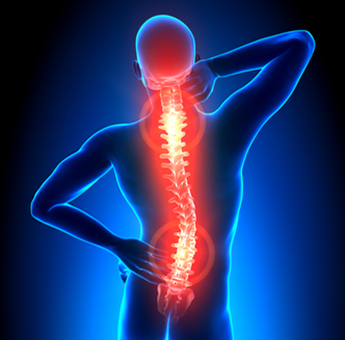Epiduroscopy
Written by admin on May 27, 2013
An epiduroscopy, also called a spinal endoscopy, is used to diagnose and treat spinal nerve pain.

What is Epiduroscopy?
An epiduroscopy, also called spinal endoscopy, is a procedure performed to treat spinal nerve pain such as sciatica and adhesions. In this procedure, a tiny fiber-optic camera is inserted into the epidural space through the sacral bone.
Who needs Epiduroscopy?
The procedure is utilized in relieving pain that arises due to adhesions that form following spinal surgery. It is also used in managing long standing sciatica. Epiduroscopy is also used for diagnostic purposes, as it can help your doctor determine the cause, location, and severity of scar tissue or adhesions.
What are the steps in Epiduroscopy?
Preparing for the Procedure
In order to perform the procedure, the patient is asked to lie on their stomach so that access can be obtained to the lower back. After cleaning the skin with antiseptic solution, a small amount of local anesthetic is injected into it to numb it.
Inserting the Needle
Under the guidance of x-rays, a needle is inserted into the sacral hiatus, which is a small opening in the bottom of the sacrum. The needle is passed all the way into the spine.
Inserting the Guide Wire
A small guide wire is then inserted through the needle, and the needle is pulled back out over the guide wire. A series of dilators are then passed over this guide wire in order to create a large enough opening to pass the epiduroscope through.
Inserting the Camera
A small catheter with a fiber-optic camera at the tip of it is passed through this opening into the epidural space. This helps visualize exactly where the catheter is being passed to. Sometimes additional imaging is also utilized to ensure the right location is reached with the catheter.
Administering the Injection
Once the catheter is in place, it is gently maneuvered to break down the adhesions. Then, an injection of local anesthetic and steroids is given. This can numb the nerves that are in this area and help reduce pain.
After SurgeryFollowing the procedure, the patient is observed for a short period of time and is discharged home after that. This procedure may effectively help reduce pain due to adhesions and sciatica. This is because the structures that are affected can be directly visualized, and treatment can be a lot more targeted.
Complications are fairly rare and can include mild bleeding at the site of the procedure. Patients may feel slightly uncomfortable and may experience mild pain following the procedure but this usually passes after a short period of time.
